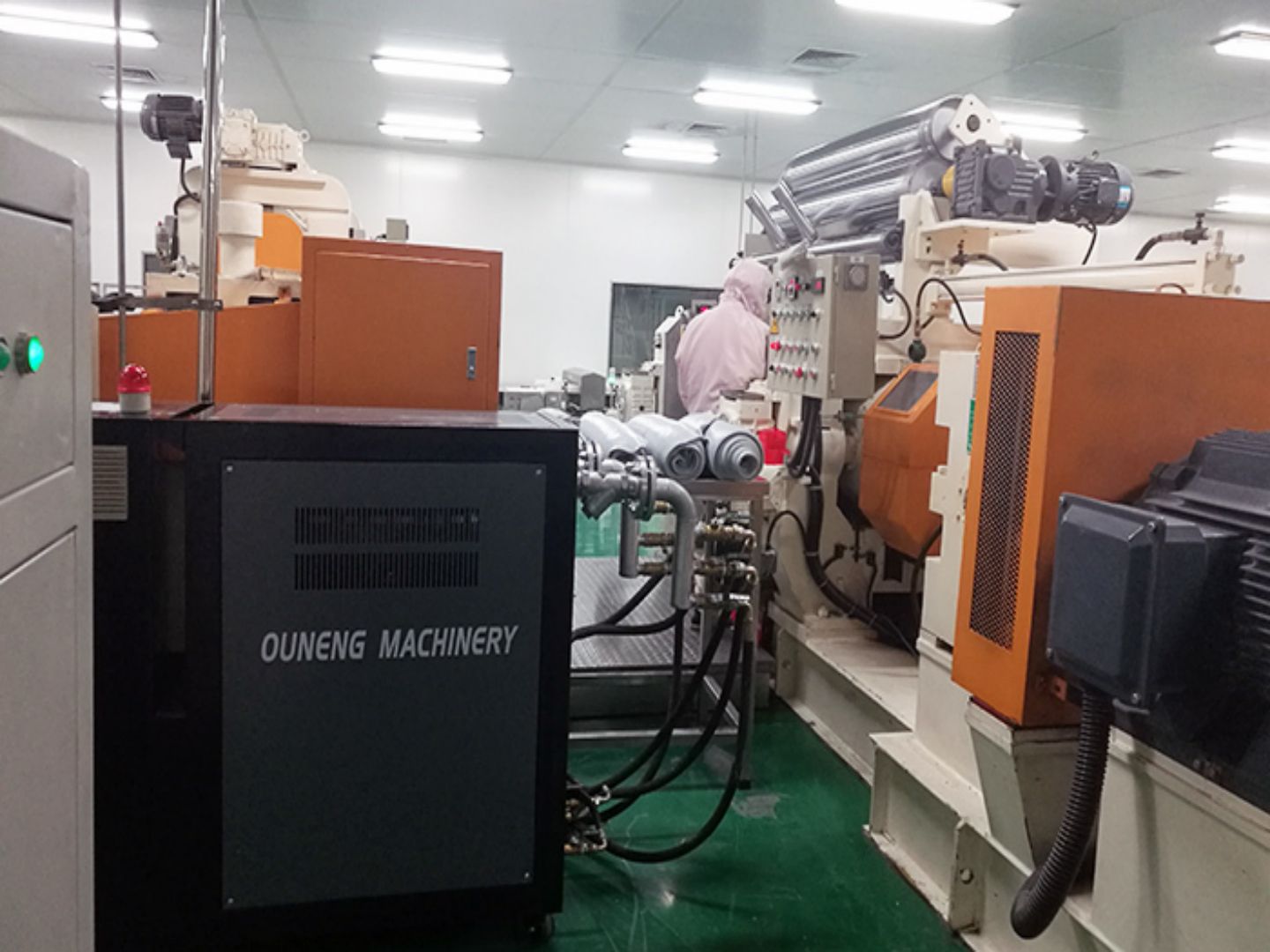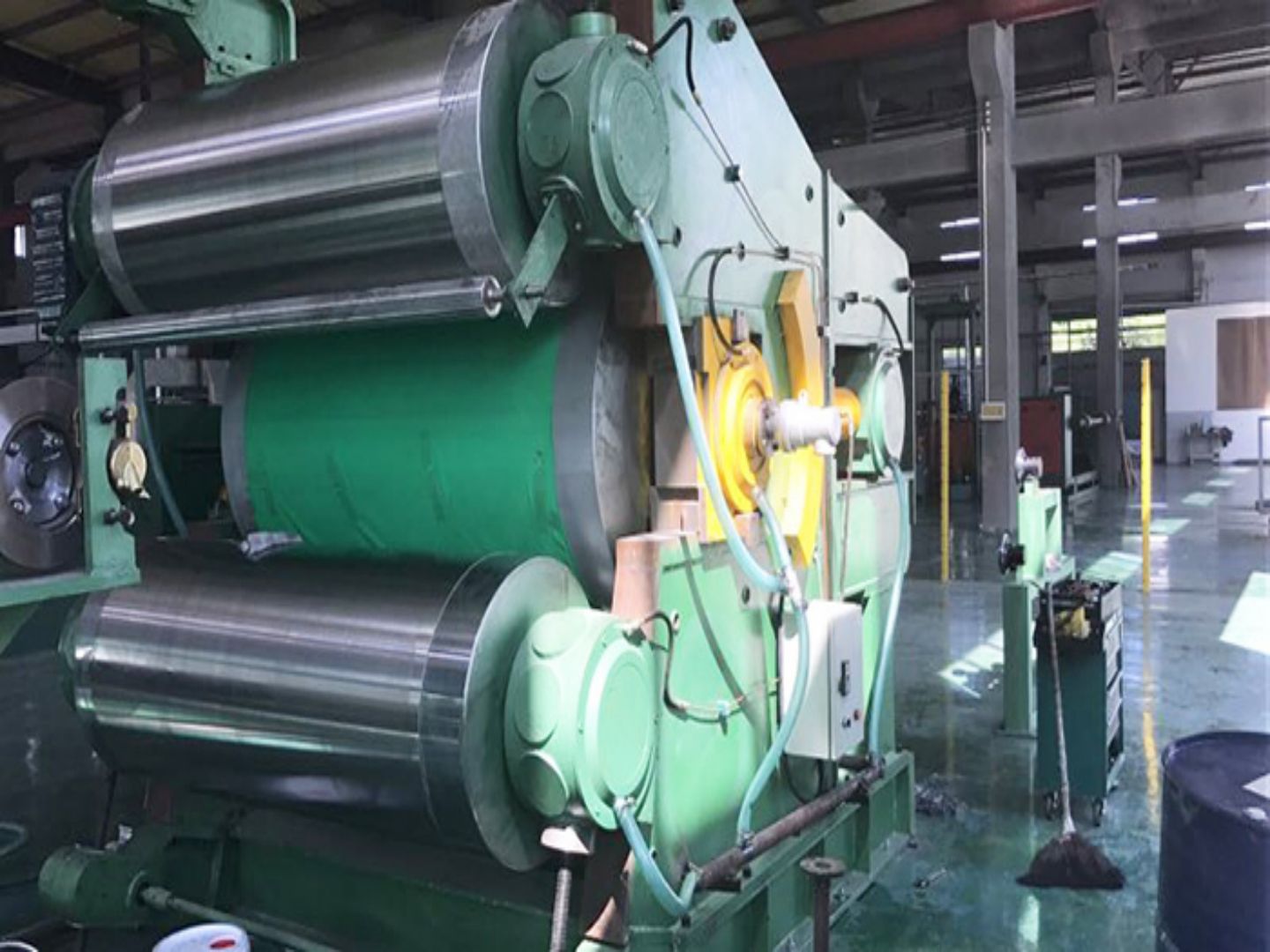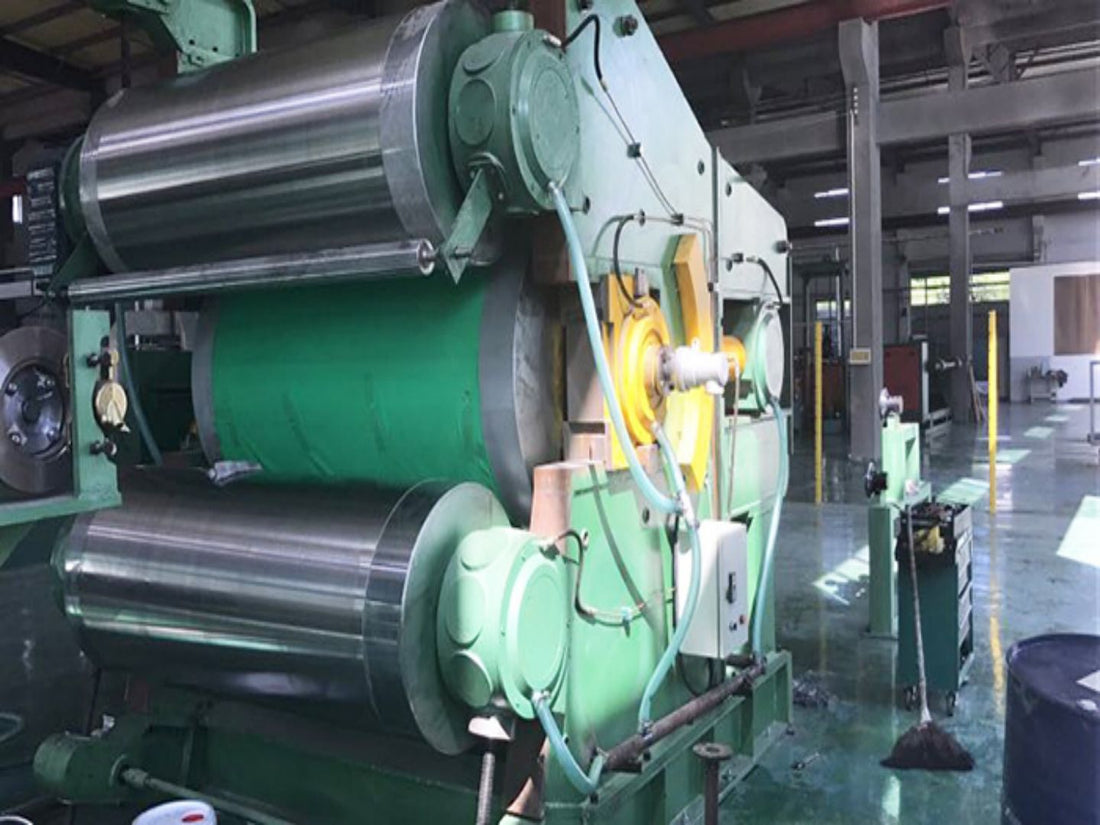- Basic process flow
The main raw materials of plastic products are raw rubber, various compounding agents, and fibers and metal materials as skeleton materials.
The plastic processing process is mainly a process of solving the contradiction between plasticity and elasticity. Through various processing methods, the elastic rubber is turned into a plastic plasticized rubber, and various compounding agents are added to make semi-finished products, and then vulcanized to become plastic. The semi-finished products are turned into rubber products with high elasticity and good physical and mechanical properties.

Products made of general solid rubber (raw rubber) as raw materials, its production process mainly includes:
Raw material preparation→plasticizing→mixing→calendering→extrusion→forming→vulcanization→resting→inspection
- Raw material preparation
The main materials of plastic products are raw rubber, compounding agent, fiber material and metal material. Among them, raw rubber is the basic material; compounding agents are auxiliary materials added to improve some properties of rubber products; fiber materials (cotton, hemp, wool and various man-made fibers, synthetic fibers) and metal materials (steel wire, copper wire) It is used as the skeleton material of rubber products to enhance mechanical strength and limit product deformation.
During the preparation of raw materials, ingredients must be accurately weighed according to the recipe. In order for the raw rubber and compounding agent to be homogeneously mixed with each other, certain materials need to be processed:
The raw rubber should be softened in a drying room at 60--70℃, and then cut and broken into small pieces;
Mass compounding agents such as paraffin, stearic acid, rosin, etc. should be crushed;
If the powder compound contains mechanical impurities or coarse particles, it needs to be screened and removed;
Liquid compounding agents (pine tar, coumarone) need to be heated, melted, evaporated, and filtered of impurities;
The compounding agent should be dried, otherwise it is easy to agglomerate, cannot be dispersed evenly during mixing, and bubbles are generated during vulcanization,thus affecting the quality of the product;

- Plasticizing
Raw rubber is elastic and lacks the necessary properties (plasticity) for processing, so it is not easy to process. In order to improve its plasticity, it is necessary to masticate the raw rubber; in this way, the compounding agent is easily dispersed in the raw rubber during mixing; at the same time, it also helps to improve the permeability of the rubber during the calendering and forming process (penetration fiber fabrics) and molding fluidity.
The process of degrading the long-chain molecules of raw rubber to form plasticity is called mastication. There are two methods of plasticizing raw rubber: mechanical plasticizing and thermal plasticizing. Mechanical mastication is a process in which the long-chain rubber molecules are degraded and shortened by the mechanical extrusion and friction of the plasticizer at a temperature that is not too high, and transformed from a highly elastic state to a plastic state. Hot plasticizing is to introduce hot compressed air into the raw rubber, under the action of heat and oxygen, the long-chain molecules are degraded and shortened, thereby obtaining plasticity.

- Mixing
In order to adapt to various conditions of use, obtain various properties, and in order to improve the performance of rubber products and reduce costs, different compounding agents must be added to the raw rubber. Mixing is a process in which the masticated raw rubber and compounding agent are mixed and placed in a rubber mixer, and the compounding agent is completely and uniformly dispersed in the raw rubber through mechanical mixing. Mixing is an important process in the production process of rubber products.
If the mixing is not uniform, the effect of rubber and compounding agents cannot be fully exerted, which affects the performance of the product. The rubber compound obtained after mixing is called mixed rubber. It is a semi-finished material for the manufacture of various rubber products, commonly known as rubber compound.
It is usually sold as a commodity. Required rubber products. Depending on the formulation, compounds are available in a range of different grades and varieties with different properties to choose from.
- Forming
In the production process of rubber products, a calender or an extruder is used to preform a process of various shapes and sizes, which is called molding.

- Vulcanization
Sulfur cross-linking occurs during vulcanization, a process in which one or more sulfur atoms are attached to the polymer chain to form bridge-like structures.
As a result of the reaction, an elastomer is formed, and its properties are changed in many ways. The vulcanizing agent can be sulfur or other related substances. The vulcanization process can be divided into four stages:
Through the measurement of the tensile strength of the rubber compound (or vulcanizer), it can be seen that the entire vulcanization process can be divided into four stages: vulcanization induction, pre-vulcanization, positive vulcanization and over-vulcanization (for natural rubber, reversion).

